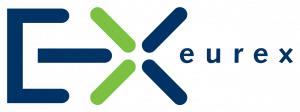 When it comes to blockchain technology and digital currencies countries like Japan and Singapore are at the forefront. Roland Schwinn, our regional head of Asia, talks about growth, times zones and new technologies that keep our Asia team busy.
When it comes to blockchain technology and digital currencies countries like Japan and Singapore are at the forefront. Roland Schwinn, our regional head of Asia, talks about growth, times zones and new technologies that keep our Asia team busy.
When it comes to clients’ needs, what are your major topics and projects in Asia right now?
These days, our most important project is clearly the extension of trading hours to completely cover the Asian time zones. So far, Eurex opens at 2:00pm, respectively 3:00pm Singapore time. For most of the trading firms in Asia, this is too late. Over the years, we have connected more than 40 direct clients to Eurex out of the regions despite the limited trading window in the time zone. With the trading hours extension coming, I expect significant growth coming for Eurex from Asia. The 16 letters of intent we have already collected globally from committed liquidity providers show that we are on the right path.
Globally, blockchain and digital currencies are increasingly gaining attention; yet, it seems that this trend is particularly strong in Asia. How do you perceive the current situation?
Countries like Japan and Singapore have become regional hubs for blockchain technology and digital assets. So far, Japan is most advanced with regards to regulation for so-called “crypto exchanges”. The Japanese regulator JFSA has given eleven licenses to such platforms, which means they are fully regulated and supervised by the financial market regulator. Japanese banks are also most advanced when it comes to the adoption of digital currencies. Nomura recently announced that they are aiming to become the first custodian bank for digital assets.
In contrast, Singapore has become the center for initial coin offerings, abbreviated as ICOs, in Asia.
Indeed. We see a lot of blockchain-related startups coming here from the U.S., Europe, Russia and other parts of Asia to prepare their ICO in Singapore. However, also this space needs clear and prudent regulation as most of the tokens offered through ICOs might be securities and thus fall under respective existing regulation. Amongst our client base, most of the proprietary trading firms are already trading digital currencies or are at least observing. Buy-side clients, in particular family offices and hedge funds, have also become active already. My personal view is that the digitization of assets has started. The ways in which we transfer value will change in the future by using blockchain technology. This will include products of all asset classes including commodities, real estate, securities, debt and so on.
What other developments are you keeping an eye on, and what might become important in the second half of this year?
Since MiFID II became active in January this year, it has become more challenging to connect new clients from so-called third countries. We work closely with our colleagues from member services and spend significant time with our clients to educate them and find solutions. Other than that, we have a strong focus on actively marketing our MSCI total return futures to our clients. The Asian names amongst the MSCI futures show particularly strong growth and dominate traded volumes and open interest. However, our competitors are not sleeping. ICE and Singapore Exchange have become direct competitors in this product segment, offering almost identical products to the same clients during Asian trading hours already. So, we need to make sure to stay competitive.











